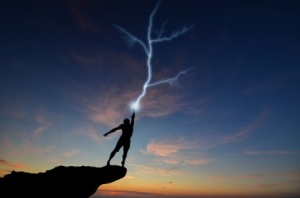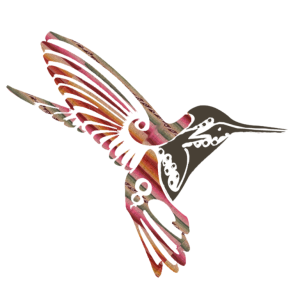This post about Andean energy dynamics covers personal power. I’ve spoken about personal power in many blog posts, but let’s drill down and look at this concept in more detail.
Personal power is a measure of the quality of your ayni. But saying that is like looking at only one strand of a spider’s web. We have to see how the entire web of personal  power gets woven. Here is the short version: Ayni, as you know, is reciprocity with the universe of living energy (kawsay pacha). It is your ability to “push” the kawsay using your intention. How successful you are is dependent on the state of your poq’po, or energy body. The less heavy energy, or hucha, in your poq’po, the more effortlessly you can practice ayni. That’s why saminchakuy is the primary practice of a paqo. It is a way to “cleanse” the poq’po of hucha and empower it with the light living energy, called sami. This entire dynamic is at play in the concept of personal power. Ayni, at heart, is your capacity for and display of personal power. So, we can see that the strands that make up your ayni—your personal power—involve sami, hucha, intention, and the state of your poq’po.
power gets woven. Here is the short version: Ayni, as you know, is reciprocity with the universe of living energy (kawsay pacha). It is your ability to “push” the kawsay using your intention. How successful you are is dependent on the state of your poq’po, or energy body. The less heavy energy, or hucha, in your poq’po, the more effortlessly you can practice ayni. That’s why saminchakuy is the primary practice of a paqo. It is a way to “cleanse” the poq’po of hucha and empower it with the light living energy, called sami. This entire dynamic is at play in the concept of personal power. Ayni, at heart, is your capacity for and display of personal power. So, we can see that the strands that make up your ayni—your personal power—involve sami, hucha, intention, and the state of your poq’po.
Because the qosqo, the belly area, is the center from which we most often engage the world, this is a primary center of personal power. The belly is the puka chunpi, or red belt, and one of its core capacities is to use khuyay as you engage life. Khuyay is passion, as in passionate engagement. It is not action in passion, but action through passion. There is a difference. You are not swept away by an impulsive passion, but combine your passion and will to fully, joyfully, and deeply engage life. The qosqo is the place of kinetic action—of being able to do what you intend to do. Khuyay is how you do it. So the qosqo is central to our capacity for and display of personal power.
Coupled with the qoqso is the root center, the yana chunpi (black belt) which girdles  the hip area of the body. This is the center where you measure your personal power. You go to your qosqo to take action, but to your root center to sense whether you actually have enough personal power to carry out that action. You may have the intention and passion to act, but not actually have sufficient energy to act (or to act successfully and efficiently). In addition, the yana chunpi is crucial to the timing of action. You check in here to determine if this is the optimal time to act. So together the puka and yana chunpis are dominant energy centers when it comes to your personal power and your actual ayni exchanges.
the hip area of the body. This is the center where you measure your personal power. You go to your qosqo to take action, but to your root center to sense whether you actually have enough personal power to carry out that action. You may have the intention and passion to act, but not actually have sufficient energy to act (or to act successfully and efficiently). In addition, the yana chunpi is crucial to the timing of action. You check in here to determine if this is the optimal time to act. So together the puka and yana chunpis are dominant energy centers when it comes to your personal power and your actual ayni exchanges.
Some people think that luck plays a major role in life. It may. But when opportunities present themselves serendipitously or not, you have to be able to detect the opportunity and take advantage of it. Thus, most luck is being at the right place at the right time with sufficient personal power and qaway (mystical seeing) to take advantage of the confluence of events and timing. In this way luck is really personal power.
Stepping back to take a larger view, your personal power is at its best when integrated with your three uppermost mystical eyes (the two physical eyes and the seventh eye in the forehead). Although each of us can “see” through each of our twelve ñawis (mystical eyes), and certainly through the seven primary ones, it is these three (the two physical eyes and seventh eye) that promote exceptional qaway, or mystical seeing. Using qaway, you can better see reality as it really is, stripped as much as possible of your personal judgments, illusions, projections, etc. Doing so ramps up the  effect your personal power can have in the world because you have to be clear-seeing to evaluate what is happening, perhaps why it is happening, what response is best suited to the situation, and so on. Right action is often dependent on clear-seeing.
effect your personal power can have in the world because you have to be clear-seeing to evaluate what is happening, perhaps why it is happening, what response is best suited to the situation, and so on. Right action is often dependent on clear-seeing.
Emerging from this concept of qaway is the notion that information underlies energy. Mystical seeing is about seeing reality as it really is, which means that mystical seeing is a kind of knowing. You accurately assess “meaning” and “state of being” as well as what is actually happening. Thus, this kind of knowing goes beyond the energetic into the informational realm. There is a scientific theory, proposed by Peter Marcer and colleagues, called Phase-Conjugate-Adaptive-Resonance (PCAR) that can help us get a handle on how this informational aspect of qaway might work.
PCAR proposes that every material object emits phase waves (energy) that encode information about that object. This happens simultaneously at multiple levels. So for, example, there is a phase wave that encodes “tree.” Then there are phase waves that encode “pine tree,” or “apple tree,” or “redwood tree.” Then within each category, the individual phase wave of a specific tree encodes information about that particular tree (if it is healthy, stressed, been hit by lightning, infested with harmful insects, etc.). According to Marcer, what determines how much information you can extract from these multiple phase waves is your level of attention. The more attention you direct to the object, the more information you can extract from its phase waves. This hypothesis can be easily applied to the Andean concept of intention. The more focused your intention and the more refined your qaway capacities are, the better your ayni and the greater your personal power.
As you can see (no pun intended!), personal power is not really something you acquire—although we talk about it that way when we are training in the tradition because we are learning to move and tune energy, focus our intention, and refine our ayni. Actually, personal power is something you are. It is a state of being. It is the sum of all your capacities as a paqo. It changes as you change and grow as a paqo and as a human being. Personal power, then, is commensurate with—and really the integration of—your state of consciousness and your state of energy.

Thank you Joan. I hope that you are well. Nora McKay
Sent from my iPad
>
LikeLike
I am, thank you!
LikeLike
Wow–I’m in the process of writing about the Strength tarot card (in the sense of Lust) — and you have totally hit it on the head here about how strength is passionate action. I hadn’t put that together until I read this post. Do you mind if I quote you?
LikeLike
You may quote me, with full bibliographic reference please to this blog.
LikeLike
Thank you!
LikeLike